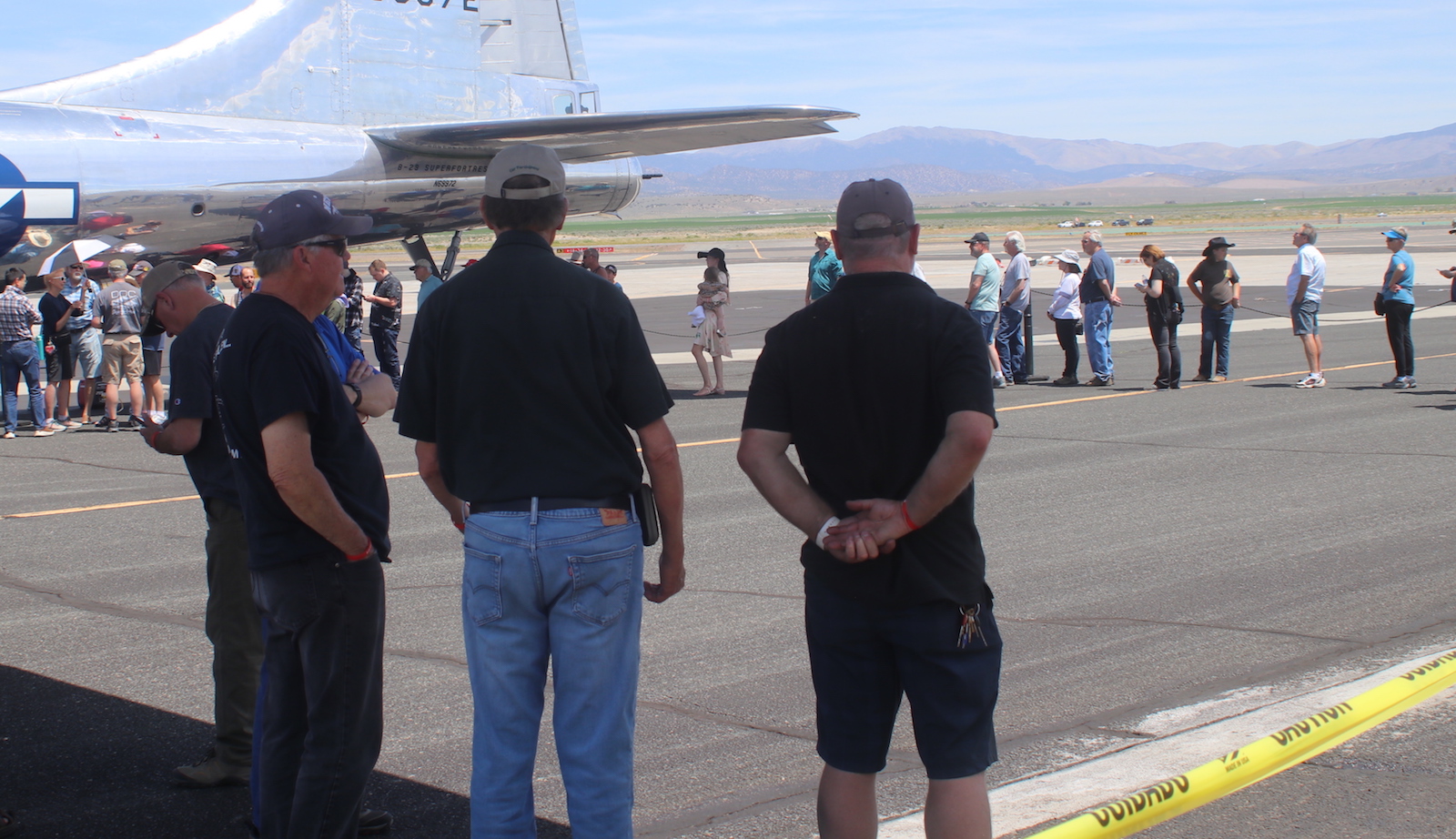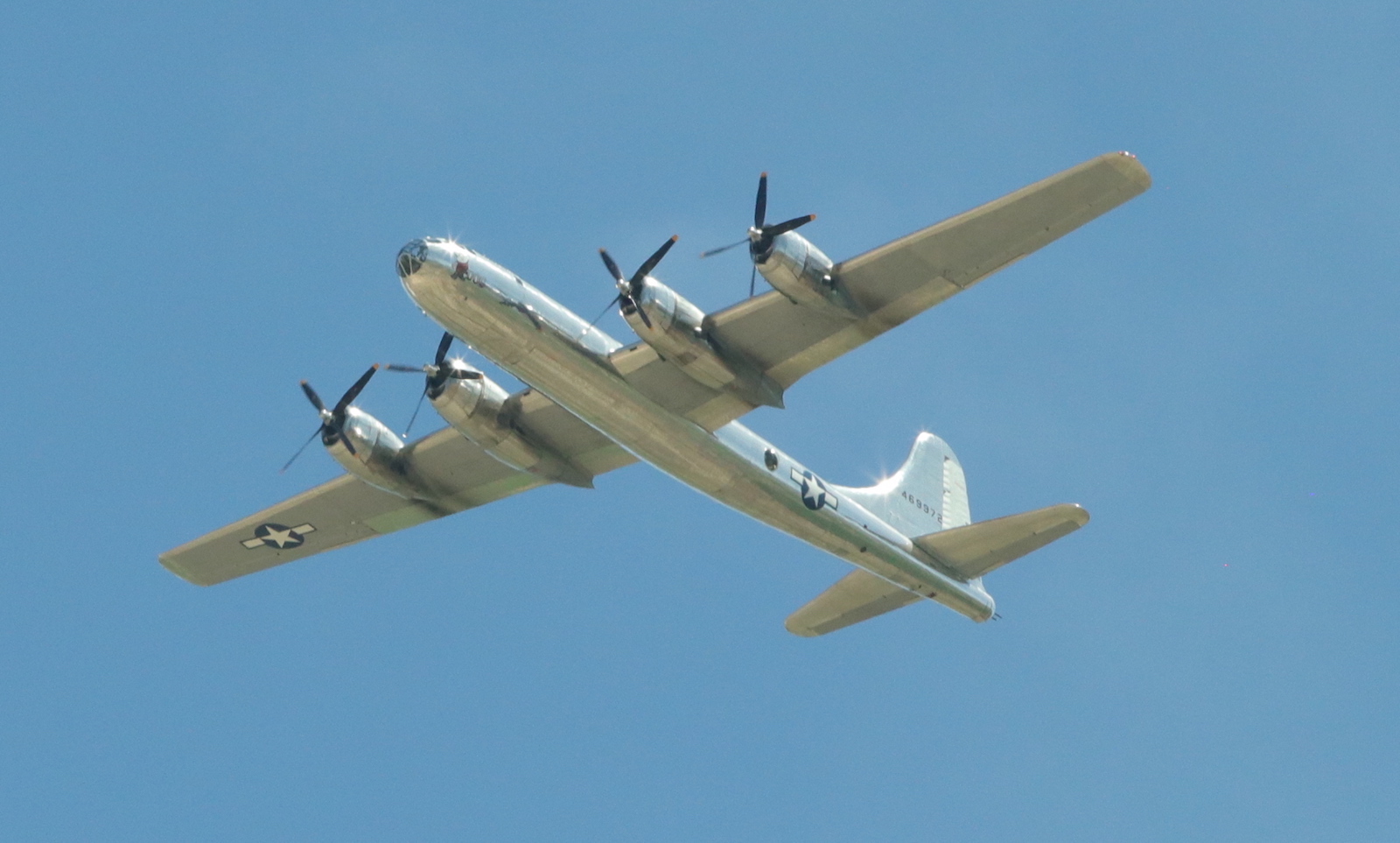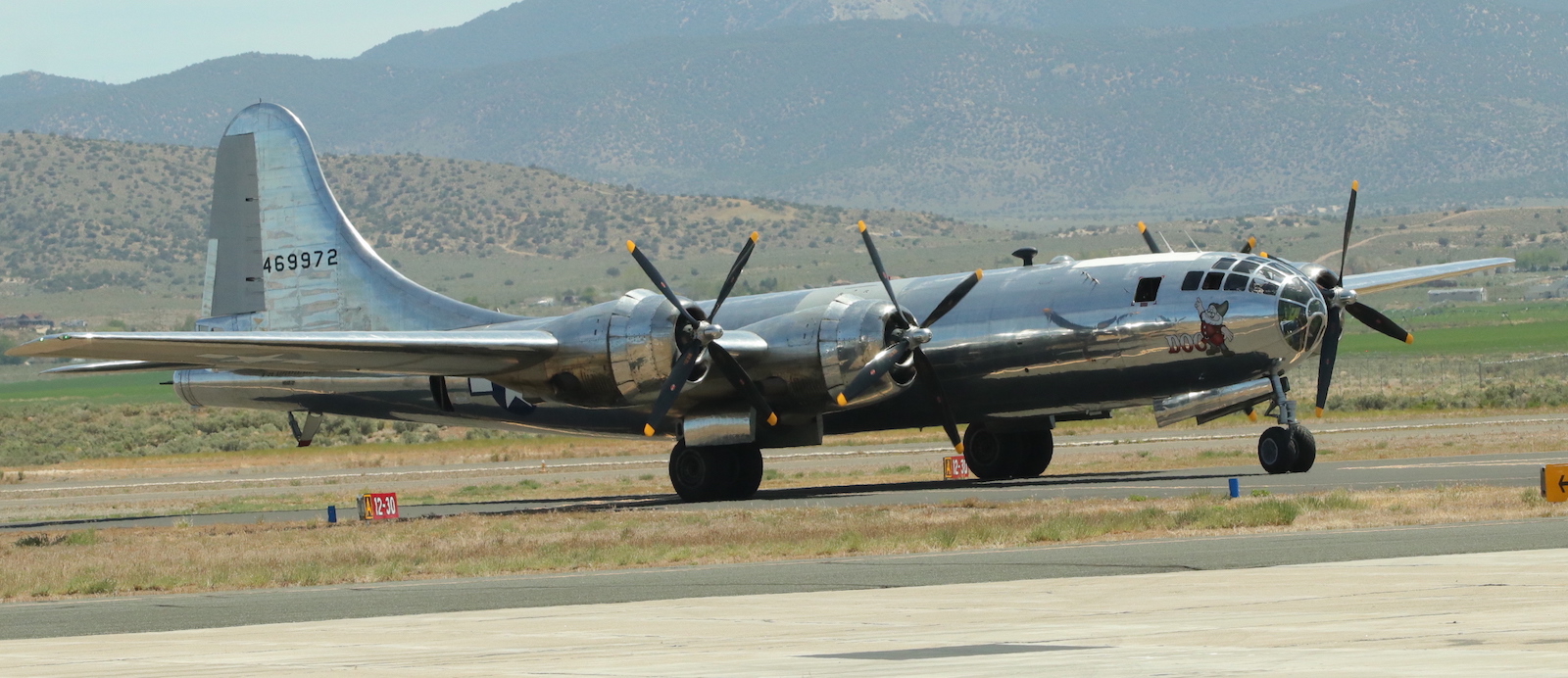 Steve Ranson / LVN
Steve Ranson / LVN
Both Wendover and the Minden-Tahoe Airport welcomed the crew and a restored Superfortress, part of the B-29 Doc History Restored Tour. The B-29 that recently offered tours gave visitors an up-close look at one of the largest aircraft of World War II. During the war, 78 B-29s were lost in action and another 21 occurred from non-combat losses.
The B-29 has a pressurized cabin, and a wingspan of 141 feet. The maximum speed is 346 knots. The armament during the war consisted of up to a dozen 50-cal. machine-guns and one 20mm cannon. Maximum bomb Load was 20,000 pounds. The B-29 was a better bomber in the Pacific that either the B-17 or B-24 because of its ability to cover longer distances before refueling.
Five years after the end of World War II, the B-29 saw action in Korea.
Josh Wells, general manager and executive director of the B-29 Doc, said the bomber was no the last leg of its tour to several states.
“We went to Wendover, which was a historic B-29 World War II base, Wells said. “It was special for us to be there for a few days.”
 Steve Ranson / LVN
Steve Ranson / LVN
Wells said visitors in Wendover are infatuated with airplanes, especially the B-29, which saw 99% of its bombing runs occurring in the Pacific theater before the war ended. He added the B-29 has two bombers that dropped atomic bombs on Japan in August 1945 introduced the United States and its allies to atomic warfare.
According to “Legacies,” The 509th Composite Group conducted numerous missions in August besides the two bombing runs over Hiroshima and Nagasaki. For almost two months, the 509th dropped bombs on 140 sorties and conducted 70 operational flights. Although several B-29s returned to Wendover in August, the 509th returned as a composite group to the Roswell (New Mexico) Army Airfield — not Wendover — on Nov. 6.
Crews from Enola Gay and Bockscar left Wendover in May 1945 for Tinian Island, the launching point for the bombers to mainland Japan. The Enola Gay dropped an atomic bomb on Hiroshima, and Bockscar dropped an atomic bomb on Nagaskai three days later on Aug. 9.
“We were humbled to be there,” Wells said of the Wendover stop. “For two nights, we parked the plane in the Enola Gay hangar because we needed to take shelter from the cold weather.”
According to Wells there’s no record to show the B-29 Doc that toured the state trained at Wendover. Wells also said the visitors at Minden are also interested in aviation.
The restored B-29 was discovered in a boneyard at the Naval Air Weapons Station (NAWS) China Lake. Volunteers rescued the plane, and Wells said volunteers restored the plane. Now, volunteers fly the B-29 Doc to various airports around the country to educate visitors about the importance of the B-29 during World War II.
“We think we have the great job on the planet, and that is to fly the B-29 around the country to honor the men and women who served our nation and share the legacy of the greatest generation.”
At each stop of the tour, a number of aviation aficionados paid upward to $1,500 to ride on the Superfortress. Others, though, waited to tour the bomber and tell stories of those who flew in a B-29 primarily from the last year of World War II to 1960, when the plane was decommissioned.
Sue Gasperson of Minden said her father was a World War II pilot aboard theB-29.
 Steve Ranson / LVN
Steve Ranson / LVN
The OSS was the intelligence agency for the United States during WWII.
Gasperson said her father and other veterans didn’t speak much of the missions on the B-29.
“They were pretty quiet, pretty humble,” she said. “It’s exciting to see old planes. We can’t lose the history.”
Comments
Use the comment form below to begin a discussion about this content.
Sign in to comment